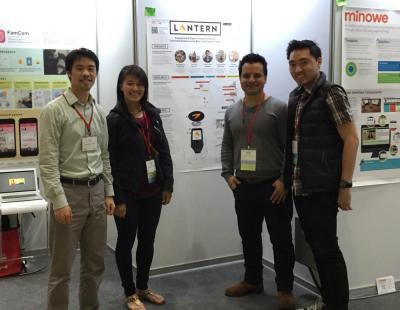MHCI Team Takes Second Place in CHI Student Design Competition

A team of students in the Masters of Human Computer Interaction program took second place last week in the 13th annual CHI Student Design Competition.
The competition, which annually attracts more than 60 teams from across the globe, asks groups of two to five students to solve a common design problem. This year, teams were tasked with designing a product, application, technology or service that enabled a new and completely unexplored user group in any country to use the things and technologies around them. Teams were encouraged to showcase their best "maker culture" abilities to build new connections and make less-voiced cultures better heard.
MHCI students Jennifer Baranoff, Israel Gonzales, Jay Liu, Heidi Yang and Jimin Zheng responded to the challenge by creating Lantern — a cost-efficient mobile service that combines previous-generation technology with modern, near-field communication capabilities to help refugees learn and navigate within their new surroundings in the U.S. In their initial research, the students learned that refugees entering the U.S. rarely have access to technology more sophisticated than a basic cell phone. Using that information, they designed a system where caseworkers and established refugees place NFC tags in areas where recent refugees may need guidance. The refugee waves a phone over the tag and receives valuable information that can help them adjust to life in the U.S. Depending on context, this help could be a pre-recorded message in the refugee’s native language, or an automated phone call or text message from a service that can provide more information.
Take this scenario for example: A recent refugee is at a bus stop on his way to the grocery story, but isn't sure which bus to take. He had an orientation session on Lantern through his resettlement agency, so he recognizes a Lantern sticker and knows to wave his phone over it. The sticker triggers the phone to dial Lantern’s centralized service, and he listens as destinations accessible via bus routes from his current stop are presented in his native language. Once he confirms the destination with the phone’s number pad, he receives a message that includes the bus number, when to get off and how to navigate to his destination.
Check out a video of the team's design here, and their poster from CHI2015 here.

